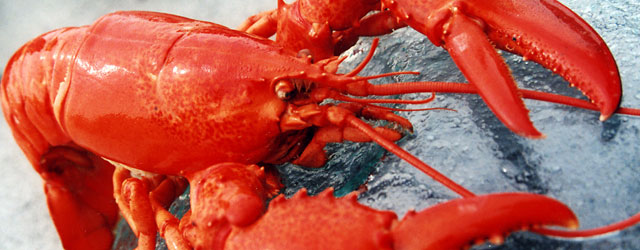
This weekend I ripped through a terrific book The Secret Life of Lobsters by Trevor Corson written back in 2004. Even if you’re not a lobster fan, I marveled at how he could take a mundane subject and weave an interesting (true) story on how the lobstermen of Maine have kept the production elevated for the past several decades, despite consistent claims of overfishing. (Incidentally my lobster pots were stolen this weekend, lines probably cut by commercial fisherman, plus we had 30 family members over to our house for the 4th for a lobster/clam bake.)
No one really knew whether cyclical declines in the number of pounds caught were natural or induced by man.
In other words, this is all about subprime lending.
While trying to find my interview on NPR about last week’s market reports (I was unsuccessful) I stumbled upon a WNYC interview with the Trevor Corson last week (the day our report was released) without using keywords such as “lobster,” “fishing” or “Maine”.
He correlated the sharp drop in Lobster prices this year with the collapse of the Iceland banking system via subprime lending. It’s worth a listen.
And here’s his related piece in The Atlantic magazine. Fascinating.
Basically, lobster prices have maintained a high price level for the past decade. A large portion of the catch was diverted to processing plants in Canada keeping supply of fresh lobsters restrained in the U.S. The Canadian plants shipped lobster products all over the world and were mainly financed by Icelandic banks who provided them revolving lines of credit. When the subprime crisis hit, these banks collapsed because of their heavy investment in financially engineered subprime mortgage products. As the lines of credit dried up, so did the processing plants and the excess harvests were stuck in the U.S. driving down wholesale lobster prices.
Sound familiar?
Oversupply of housing driving down prices correlates to the “V-notch” technique to increase the lobster population. I won’t even bring up the V-shaped recovery“, since I’m still full from our lobster bake.
Somehow it all comes back to lobsters.
UPDATE On a side note, the wholesale cost to restaurants has fallen sharply but the consumer is largely unaware of the drop, so restaurants have enjoyed a larger spread between what they charge you and what it costs them. Have you ever noticed how many lobster related items appear on a typical mid to upscale restaurant menu? It seems to be 4-5 items now have lobster in them. Menus used to contain one lobster item, a whole steamed version. Now lobster mac & cheese is a popular favorite. Thank synthetic CDOs for that.
One Comment
Comments are closed.


Nifty, just nifty. I guess I can’t choose whether to be a part of the economy, but I can definitely choose whether to eat lobster. To hell with self-centered market manipulators. No more Wal-mart and no more lobster. No question as to which I will miss the most?
I just finished a book and that author maintains that what made the country great was its natural resources that were there for the taking without consideration of the consequences. I guess this confirms once again that ethics didn’t have a lot to do with it.
Are the bean counters and the bottom line forever or can we look forward to a free market that includes responsibility and accountability to something more than selfish greed?